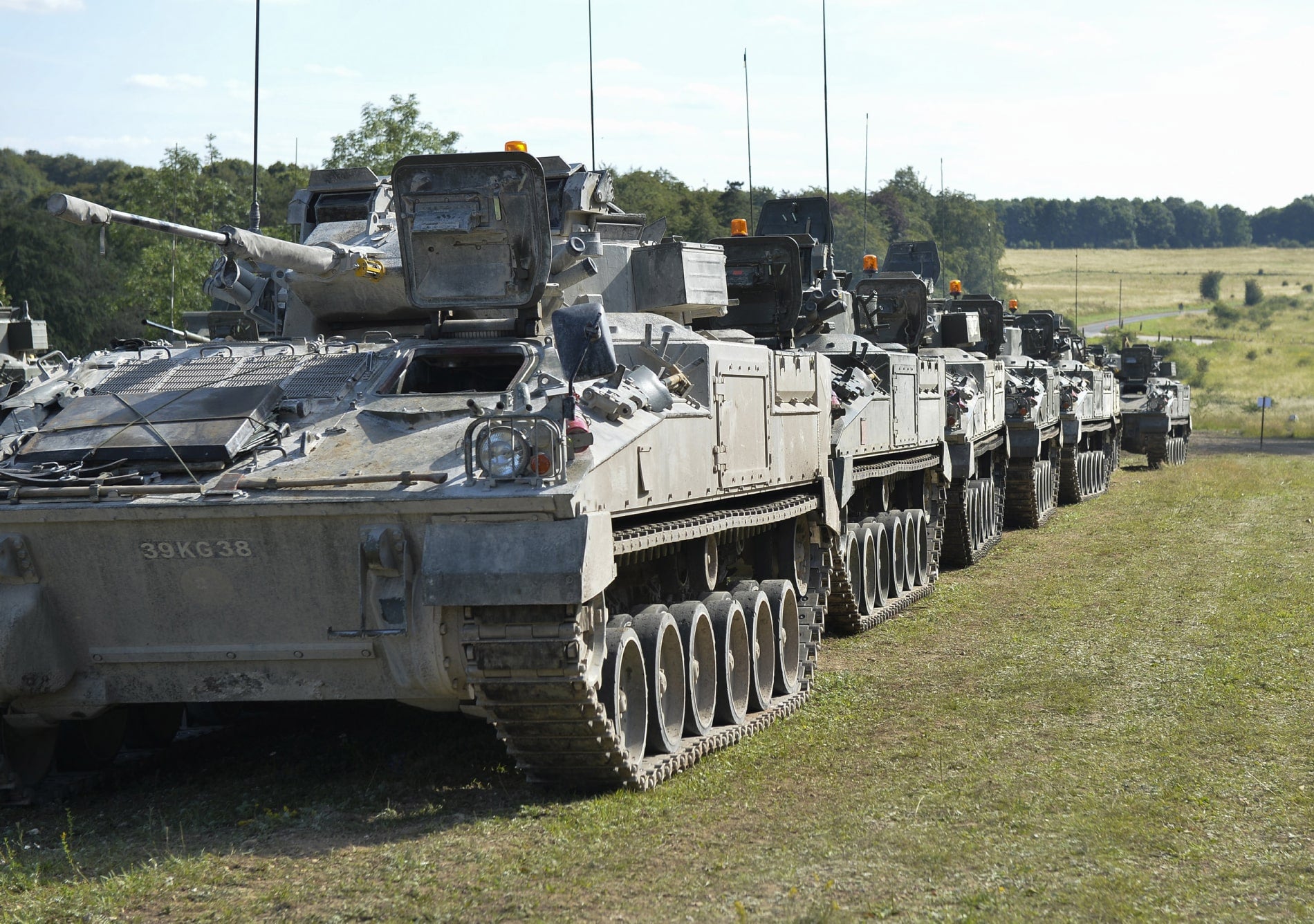
Speaking to Parliament’s Defence Select Committee, International Institute for Strategic Studies (IISS) senior fellow for land warfare Ben Barry told MPs that a Russian tank brigade would defeat a British Army Division in its current state.
Barry said that by 2025, the British Army has suggested it could field a division that would only have ‘half the combat power’ of planned divisions described in the 2015 Strategic Defence and Security Review (SDSR).

Discover B2B Marketing That Performs
Combine business intelligence and editorial excellence to reach engaged professionals across 36 leading media platforms.
Compared with a Russian tank division, the British force described in SDSR 2015 would be numerically smaller, encompassing two-thirds of the tanks, 40% fewer anti-tank guided weapons, a third fewer artillery pieces, and a third fewer multi-barrel rocket launchers. However, the British Force would have slightly more infantry fighting vehicles (IFVs).
Nonetheless, despite the smaller force, Barry said the Army’s envisaged 2015 SDSR division could likely stop a Russian a tank division ‘in its tracks’.
Barry explained that the reduced UK division would only have half the anti-armour capability, 30% of the tanks, two-thirds of the IFVs, two-thirds of the anti-tank guided weapons, and 15% of self-propelled artillery when compared to a Russian tank division.
Barry added: “I think it would be very difficult for that reduced division to actually stop a Russian tank division. A Russian tank division would seriously overmatch the reduced third division, and of course, overmatch is a very polite, clinical way of saying could be defeated.”

US Tariffs are shifting - will you react or anticipate?
Don’t let policy changes catch you off guard. Stay proactive with real-time data and expert analysis.
By GlobalDataUnder the 2015 SDSR, the British Army planned to have by 2025 a division made up of three Brigades drawn from two armoured infantry brigades and two of the new Strike Brigades.
In October, in evidence submitted to the same committee, the British Army said that by 2025 it would only be able to field a division made up of one manoeuvre brigade, and one interim manoeuvre support brigade, adding that a division including planned Strike Brigades would not be ready until the 2030s.
The manoeuvre brigade will consist of tanks and armoured IFVs, with the described interim manoeuvre support brigade made up of a mixed fleet of Boxer, AJAX, and in-service protected mobility vehicles.
In its evidence, the British Army added that Boxer would achieve full operating capability in the early 2030s, then allowing it to take the place of protected mobility vehicles and complete the full planned Strike capability.
Explaining the reason behind the reduced force, the Ministry of Defence (MOD) wrote: “The 2015 SDSR, and subsequent planning round decisions, did not fully resource the army to achieve this output within this timeframe.
“In the face of ongoing departmental financial challenges, subsequent programming decisions have kept the modernisation programme alive but placed it under increasing pressure and resulted in an inability to fully meet the 2015 SDSR ambitions.”
The UK is currently procuring 589 AJAX vehicles from General Dynamics Land Systems-UK and 508 Boxer Mechanised Infantry Vehicles (MIVs) which will form the basis of the British Army’s Strike brigades.
The British Army also plans to upgrade its Challenger 2 Main Battle Tanks, and Warrior IFVs, however, final decisions on these programmes are wrapped up in the UK’s upcoming integrated review into foreign, defence and security policy. Challenger 2 entered service in 1998, and Warrior in 1984.
Currently, the British Army is in talks with Lockheed Martin on the terms of a production contract for the Warrior Capability Sustainment Programme (WCSP). The army is also nearing the end of negotiations with Rheinmettal BAE Systems Land (RBSL) on the future of the Challenger 2 Life Extension Programme (LEP).
Ahead of the integrated review, there were some reports that the UK was assessing options to scrap its Challenger and Warrior fleets to focus spending on other capabilities.





